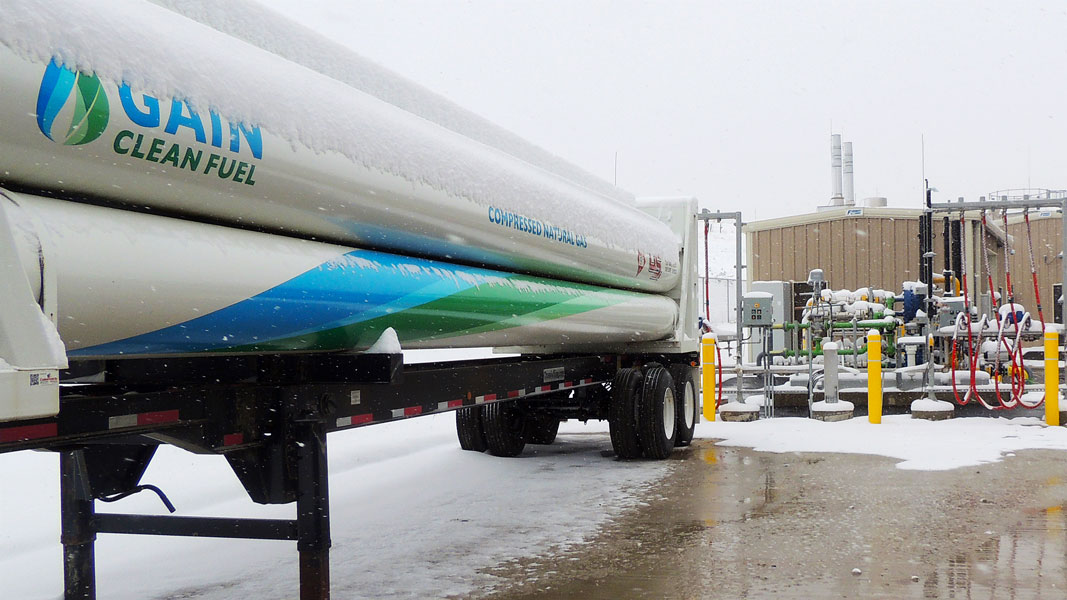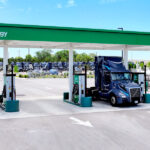Top: Compressed farm biogas being delivered to the Dane County (WI) RNG facility. Photo by Doug Pinkerton
For many years, biogas produced by farm digesters in the U.S. was used to generate electricity and/or heat. That trend began to change over the 2005-2010 period, which “witnessed the introduction of biogas-to-RNG facilities, meaning the raw biogas is upgraded to pipeline quality renewable natural gas (RNG),” according to recently released industry data from the American Biogas Council (ABC). “By 2010, RNG projects represented 10% of [agricultural sector] projects; by 2018 it climbed to 14%.”
Since 2018, dairy and swine manure anaerobic digestion projects that produce RNG grew dramatically, adds ABC, due to the “rapid development of clusters” — 2-to-30+ farm digesters connected to one biogas-to-RNG upgrading site before injecting the RNG into a gas pipeline. In the Madison (WI) region, farm digesters have the option of compressing the biogas and having it transported to an offloading station at the Dane County Rodefeld Landfill RNG facility, where the biogas is conditioned and injected into the pipeline along with landfill gas. This enables biogas producers in the area, such as dairy farmers, to access the interstate pipeline and renewable energy markets, especially when it may be cost-prohibitive to connect directly to an accessible pipeline that may be near their farms.
Today, RNG projects exceed the number of power projects located on farms, representing 52% of all operational agriculture projects in the U.S. “In 2023, new agriculture biogas-to-RNG projects represented 94% of all agriculture projects commencing operations,” reports ABC.













